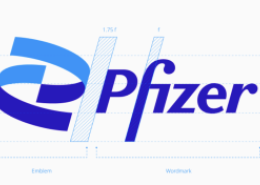XALKORI® (crizotinib) Approved by U.S. FDA for the Treatment of Patients with ROS1-Positive Metastatic Non-Small Cell Lung Cancer
XALKORI is the first and only FDA-approved biomarker-driven therapy for ROS1-positive metastatic NSCLC
“As with ALK-positive lung cancer, ROS1-positive lung cancer defines a distinct subset of patients for whom crizotinib is efficacious.”
Pfizer Inc. (NYSE:PFE) today announced that the U.S. Food and Drug Administration (FDA) has approved a supplemental New Drug Application (sNDA) for XALKORI® (crizotinib) to treat patients with metastatic non-small cell lung cancer (NSCLC) whose tumors are ROS1-positive. In 2015, the FDA granted Breakthrough Therapy and Priority Review designations for this indication. XALKORI also is indicated for patients with metastatic NSCLC whose tumors are anaplastic lymphoma kinase (ALK)-positive as detected by an FDA-approved test.1
“Today’s approval of XALKORI for ROS1-positive metastatic NSCLC represents an important milestone for patients who previously had limited treatment options,” said Dr. Mace Rothenberg, senior vice president of Clinical Development and Medical Affairs and chief medical officer for Pfizer Oncology. “As the only FDA-approved biomarker-driven therapy that includes two distinct molecular targets in metastatic NSCLC, ROS1 and ALK, XALKORI exemplifies our commitment to precision drug development and to identifying the right treatment for the right patient.”
ROS1 rearrangements occur when the ROS1 gene attaches to another gene and changes the way each gene normally functions, which can contribute to cancer-cell growth. Epidemiology data suggest that ROS1 rearrangements occur in approximately one percent of NSCLC cases.2 Of the estimated 1.5 million new cases of NSCLC worldwide each year, roughly 15,000 may be driven by oncogenic ROS1 fusions.2,3,4
“The approval of crizotinib for metastatic ROS1-positive non-small cell lung cancer represents another significant step forward in biomarker-driven cancer care,” said Dr. Alice Shaw, Associate Professor of Medicine at Massachusetts General Hospital and Harvard Medical School, and principal study investigator. “As with ALK-positive lung cancer, ROS1-positive lung cancer defines a distinct subset of patients for whom crizotinib is efficacious.”
The approval is based on a multicenter, single-arm Phase 1 study (Study 1001) that included 50 patients with ROS1-positive metastatic NSCLC treated with 250 mg of XALKORI orally twice daily. The efficacy outcome measures in this study were objective response rate and duration of response.1
The results of this study showed that XALKORI exhibited marked anti-tumor activity in patients with ROS1-positive metastatic NSCLC, with an objective response rate of 66 percent (95% CI: 51%, 79%) by an independent radiology review. There was one complete response and 32 partial responses. The median duration of response was 18.3 months (95% CI: 12.7 months, not reached). Additionally, the safety profile of XALKORI in ROS1-positive metastatic NSCLC was generally consistent with that observed in patients with ALK-positive metastatic NSCLC.1
An FDA-approved test for the detection of ROS1 rearrangements in NSCLC is not currently available; however, laboratory developed tests are available. A companion diagnostic test is currently under development to identify patients with ROS1-positive metastatic NSCLC who may benefit from treatment with XALKORI.
Additionally, the European Medicines Agency (EMA) is reviewing an application to extend the marketing authorization of XALKORI to include the treatment of adult patients with ROS1-positive advanced NSCLC. In Europe, XALKORI is indicated for the first-line treatment of adults with ALK-positive advanced NSCLC and for the treatment of adults with previously treated ALK-positive advanced NSCLC.
About XALKORI® (crizotinib)
XALKORI is a kinase inhibitor indicated in the U.S. for the treatment of patients with metastatic non-small cell lung cancer (NSCLC) whose tumors are anaplastic lymphoma kinase (ALK)-positive as detected by an FDA-approved test, and for the treatment of patients with metastatic NSCLC whose tumors are ROS1-positive. XALKORI was the first ALK inhibitor approved in the U.S. and has been used to treat more than 8,000 patients to date.5
XALKORI Important Safety Information
Hepatotoxicity: Drug-induced hepatotoxicity with fatal outcome occurred in 0.1% of patients treated with XALKORI across clinical trials (n=1719). Transaminase elevations generally occurred within the first 2 months. Monitor with liver function tests including ALT, AST, and total bilirubin every 2 weeks during the first 2 months of treatment, then once a month and as clinically indicated, with more frequent repeat testing for increased liver transaminases, alkaline phosphatase, or total bilirubin in patients who develop transaminase elevations. Permanently discontinue for ALT/AST elevation >3 times ULN with concurrent total bilirubin elevation >1.5 times ULN (in the absence of cholestasis or hemolysis); otherwise, temporarily suspend and dose-reduce XALKORI as indicated.
Interstitial Lung Disease (Pneumonitis): Severe, life-threatening, or fatal interstitial lung disease (ILD)/pneumonitis can occur. Across clinical trials (n=1719), 2.9% of XALKORI-treated patients had any grade ILD, 1.0% had Grade 3/4, and 0.5% had fatal ILD. ILD generally occurred within 3 months after initiation of treatment. Monitor for pulmonary symptoms indicative of ILD/pneumonitis. Exclude other potential causes and permanently discontinue XALKORI in patients with drug-related ILD/pneumonitis.
QT Interval Prolongation: QTc prolongation can occur. Across clinical trials (n=1616), 2.1% of patients had QTcF (corrected QT by the Fridericia method) ≥500 ms and 5.0% had an increase from baseline QTcF ≥60 ms by automated machine-read evaluation of ECGs. Avoid use in patients with congenital long QT syndrome. Monitor with ECGs and electrolytes in patients with congestive heart failure, bradyarrhythmias, electrolyte abnormalities, or who are taking medications that prolong the QT interval. Permanently discontinue XALKORI in patients who develop QTc >500 ms or ≥60 ms change from baseline with Torsade de pointes, polymorphic ventricular tachycardia, or signs/symptoms of serious arrhythmia. Withhold XALKORI in patients who develop QTc >500 ms on at least 2 separate ECGs until recovery to a QTc ≤480 ms, then resume at a reduced dose.
Bradycardia: Symptomatic bradycardia can occur. Across clinical trials, bradycardia occurred in 12.7% of patients treated with XALKORI (n=1719. Avoid use in combination with other agents known to cause bradycardia. Monitor heart rate and blood pressure regularly. In cases of symptomatic bradycardia that is not life-threatening, hold XALKORI until recovery to asymptomatic bradycardia or to a heart rate of ≥60 bpm, re-evaluate the use of concomitant medications, and adjust the dose of XALKORI. Permanently discontinue for life-threatening bradycardia due to XALKORI; however, if associated with concomitant medications known to cause bradycardia or hypotension, hold XALKORI until recovery to asymptomatic bradycardia or to a heart rate of ≥60 bpm. If concomitant medications can be adjusted or discontinued, restart XALKORI at 250 mg once daily with frequent monitoring.
Severe Visual Loss: Across clinical trials, the incidence of Grade 4 visual field defect with vision loss was 0.2% (n=1719). Discontinue XALKORI in patients with new onset of severe visual loss (best corrected vision less than 20/200 in one or both eyes). Perform an ophthalmological evaluation. There is insufficient information to characterize the risks of resumption of XALKORI in patients with a severe visual loss; a decision to resume should consider the potential benefits to the patient.
Vision Disorders: Most commonly visual impairment, photopsia, blurred vision or vitreous floaters, occurred in 63.1% of 1719 patients. The majority (95%) of these patients had Grade 1 visual adverse reactions. 0.8% of patients had Grade 3 and 0.2% had Grade 4 visual impairment. The majority of patients on the XALKORI arms in Studies 1 and 2 (>50%) reported visual disturbances which occurred at a frequency of 4-7 days each week, lasted up to 1 minute, and had mild or no impact on daily activities.
Embryo-Fetal Toxicity: XALKORI can cause fetal harm when administered to a pregnant woman. Advise of the potential risk to the fetus. Advise females of reproductive potential and males with female partners of reproductive potential to use effective contraception during treatment and for at least 45 days (females) or 90 days (males) respectively, following the final dose of XALKORI.
ROS1-positive Metastatic NSCLC: Safety was evaluated in 50 patients with ROS1-positive metastatic NSCLC from a single-arm study, and was generally consistent with the safety profile of XALKORI evaluated in patients with ALK-positive metastatic NSCLC. Vision disorders occurred in 92% of patients in the ROS1 study; 90% of patients had Grade 1 vision disorders and 2% had Grade 2.
Adverse Reactions: Safety was evaluated in a phase 3 study in previously untreated patients with ALK-positive metastatic NSCLC randomized to XALKORI (n=171) or chemotherapy (n=169). Serious adverse events were reported in 34% of patients treated with XALKORI, the most frequent were dyspnea (4.1%) and pulmonary embolism (2.9%). Fatal adverse events in XALKORI-treated patients occurred in 2.3% of patients, consisting of septic shock, acute respiratory failure, and diabetic ketoacidosis. Common adverse reactions (all grades) occurring in ≥25% and more commonly (≥5%) in patients treated with XALKORI vs chemotherapy were vision disorder (71% vs 10%), diarrhea (61% vs 13%), edema (49% vs 12%), vomiting (46% vs 36%), constipation (43% vs 30%), upper respiratory infection (32% vs 12%), dysgeusia (26% vs 5%), and abdominal pain (26% vs 12%). Grade 3/4 reactions occurring at a ≥2% higher incidence with XALKORI vs chemotherapy were QT prolongation (2% vs 0%), and constipation (2% vs 0%). In patients treated with XALKORI vs chemotherapy, the following occurred: elevation of ALT (any grade [79% vs 33%] or Grade 3/4 [15% vs 2%]); elevation of AST (any grade [66% vs 28%] or Grade 3/4 [8% vs 1%]); neutropenia (any grade [52% vs 59%] or Grade 3/4 [11% vs 16%]); lymphopenia (any grade [48% vs 53%] or Grade 3/4 [7% vs 13%]); hypophosphatemia (any grade [32% vs 21%] or Grade 3/4 [10% vs 6%]). In patients treated with XALKORI vs chemotherapy, renal cysts occurred (5% vs 1%). Nausea (56%), decreased appetite (30%), fatigue (29%), and neuropathy (21%) also occurred in patients taking XALKORI.
Drug Interactions: Exercise caution with concomitant use of moderate CYP3A inhibitors. Avoid grapefruit or grapefruit juice which may increase plasma concentrations of crizotinib. Avoid concomitant use of strong CYP3A inducers and inhibitors. Avoid concomitant use of CYP3A substrates with narrow therapeutic range in patients taking XALKORI. If concomitant use of CYP3A substrates with narrow therapeutic range is required in patients taking XALKORI, dose reductions of the CYP3A substrates may be required due to adverse reactions.
Lactation: Because of the potential for adverse reactions in breastfed infants, advise females not to breast feed during treatment with XALKORI and for 45 days after the final dose.
Hepatic Impairment: XALKORI has not been studied in patients with hepatic impairment. As crizotinib is extensively metabolized in the liver, hepatic impairment is likely to increase plasma crizotinib concentrations. Use caution in patients with hepatic impairment.
Renal Impairment: Administer XALKORI at a starting dose of 250 mg taken orally once daily in patients with severe renal impairment (CLcr <30 mL/min) not requiring dialysis. No starting dose adjustment is needed for patients with mild and moderate renal impairment.
For more information and full Prescribing Information, visit www.XALKORI.com.
About Pfizer Oncology
Pfizer Oncology is committed to the discovery, investigation and development of innovative treatment options to improve the outlook for cancer patients worldwide. Our strong pipeline of biologics and small molecules, one of the most robust in the industry, is studied with precise focus on identifying and translating the best scientific breakthroughs into clinical application for patients across a wide range of cancers. By working collaboratively with academic institutions, individual researchers, cooperative research groups, governments, and licensing partners, Pfizer Oncology strives to cure or control cancer with breakthrough medicines, to deliver the right drug for each patient at the right time. For more information, please visit www.pfizer.com.
Pfizer Inc.: Working together for a healthier world®
At Pfizer, we apply science and our global resources to bring therapies to people that extend and significantly improve their lives. We strive to set the standard for quality, safety and value in the discovery, development and manufacture of healthcare products. Our global portfolio includes medicines and vaccines as well as many of the world's best-known consumer healthcare products. Every day, Pfizer colleagues work across developed and emerging markets to advance wellness, prevention, treatments and cures that challenge the most feared diseases of our time. Consistent with our responsibility as one of the world's premier innovative biopharmaceutical companies, we collaborate with health care providers, governments and local communities to support and expand access to reliable, affordable health care around the world. For more than 150 years, Pfizer has worked to make a difference for all who rely on us. For more information, please visit us at www.pfizer.com. In addition, to learn more, follow us on Twitter at@Pfizer and @Pfizer_News, LinkedIn,YouTube, and like us on Facebook at Facebook.com/Pfizer.
DISCLOSURE NOTICE: The information contained in this release is as of March 11, 2016. Pfizer assumes no obligation to update forward-looking statements contained in this release as the result of new information or future events or developments. This release contains forward-looking information about a new indication for XALKORI (crizotinib) for the treatment of patients with metastatic non-small cell lung cancer whose tumors are ROS1-positive (the “new indication”), including its potential benefits, that involves substantial risks and uncertainties that could cause actual results to differ materially from those expressed or implied by such statements. Risks and uncertainties include, among other things, the uncertainties inherent in research and development; uncertainties regarding the commercial success of XALKORI for the new indication; whether and when any applications may be filed with other regulatory authorities for XALKORI for the new indication; whether and when the EMA will approve the application to extend the marketing authorization of XALKORI to include the new indication and whether and when other regulatory authorities may approve any such other applications, which will depend on the assessment by such regulatory authorities of the benefit-risk profile suggested by the totality of the efficacy and safety information submitted; decisions by regulatory authorities regarding labeling and other matters that could affect the availability or commercial potential of XALKORI; and competitive developments.
A further description of risks and uncertainties can be found in Pfizer’s Annual Report on Form 10-K for the fiscal year ended December 31, 2015 and in its subsequent reports on Form 10-Q, including in the sections thereof captioned “Risk Factors” and “Forward-Looking Information and Factors That May Affect Future Results”, as well as in its subsequent reports on Form 8-K, all of which are filed with the U.S. Securities and Exchange Commission and available at www.sec.gov and www.pfizer.com.
1 XALKORI® (crizotinib) Prescribing Information. New York. NY: Pfizer Inc: 2016.
2 Gainor JF, Shaw AT. Novel targets in non-small cell lung cancer: ROS1 and RET fusions. Oncologist 2013;18:865-75.
3 American Cancer Society. Detailed Guide: What is Lung Cancer – Non-Small Cell? Available at:http://www.cancer.org/cancer/lungcancer-non-smallcell/detailedguide/non-small-cell-lung-cancer-what-is-non-small-cell-lung-cancer. Accessed March 16, 2015.
4 World Health Organization. GLOBOCAN 2012: Estimated Cancer Incidence, Mortality and Prevalence Worldwide in 2012. Available at: http://globocan.iarc.fr/Pages/fact_sheets_cancer.aspx. Accessed December 29, 2015.
5 Pfizer. Data on file.
Media:
Sally Beatty, (212) 733-6566
or
Investor:
Ryan Crowe, (212) 733-8160








